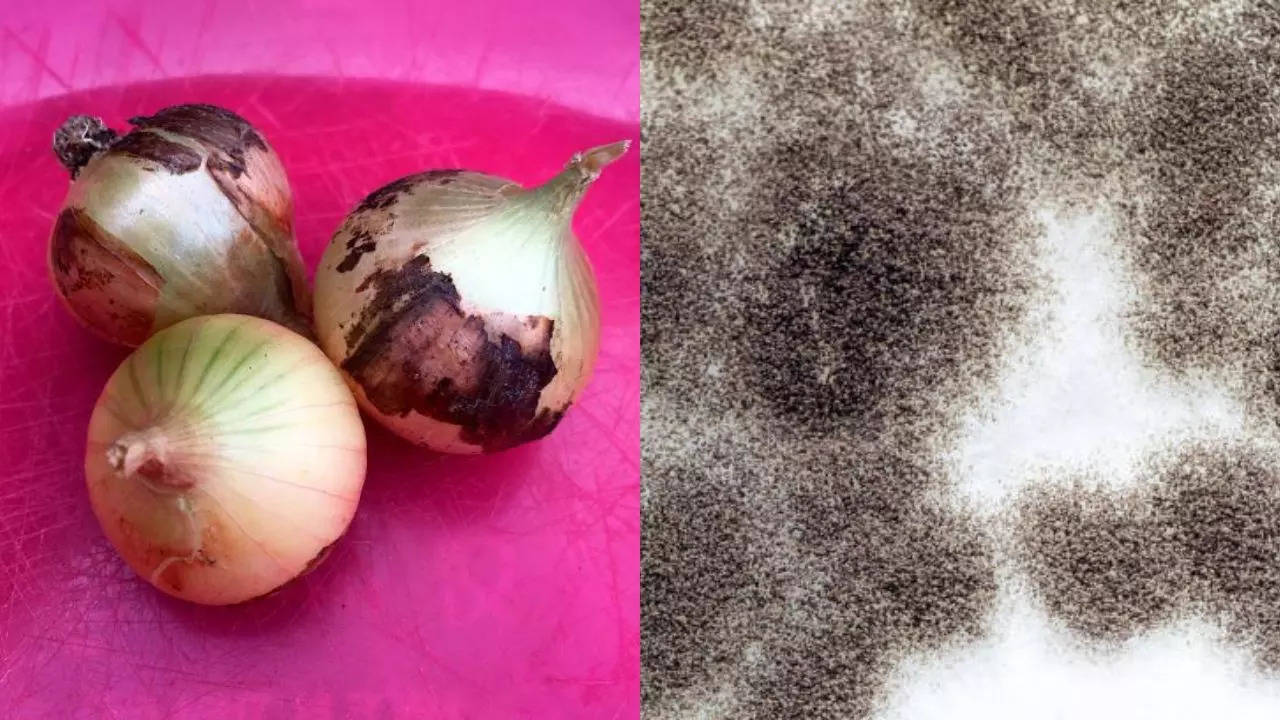
Onions are among the most widely used ingredients in Indian kitchens, where meals are cooked using this essential bulb. Apart from enhancing flavours, onions are packed with health benefits which include reducing the risk of the dreaded cancer and promoting healthy hair and skin growth. However, many times you would have noticed black, dusty mold on the outer covering of onions.
Caused by Aspergillus Niger - a common fungus found in the soil; this can be toxic. What is Aspergillus niger? According to research, the fungus Aspergillus niger can be attributed to the cause of some cases of pneumonia. It is also the causative agent of black mold on the outsides of certain foods like apricots, onions, grapes, etc - therefore making it a food spoilage organism.
Scientists say the name Aspergillus comes from the Latin word aspergillum - which roughly translates to holy water sprinkler - referring to the shape of these sprinklers being very similar to how these fungi appear when viewed under a microscope. Severe side effects of Aspergillus niger Aspergillus niger has many strains that range from anywhere between 900-1,600μm in length, with the rough, spherical conidia measuring 3-5μm. Experts say some strains of this mold are known to secrete ochratoxins which give rise to nephrotoxicity and renal tumours in a variety of animal species and are potentially hazardous to human health through their consumption.
They are released by Aspergillus and Penicillium fungi species. Ochratoxin A, for example, is a problem organism during the bulk storage of grains if the conditions are in any way wet or damp. According to experts, the mold also produces oxalic acid, which causes hypocalcemia and renal failure, apart from damaging neurons.
Research indicates that black mold in onions possesses toxicity which can cause allergic reactions like vomiting, nausea, headaches, stomachache, and diarrhoea. How to get rid of the black mold on onions? To get rid of black mold on onions, you can trim the affected areas can be trimmed before consuming - but only if the whole of the onion is not affected. Experts say when molds become noticeable on the onion’s surface or any other vegetable, it means that microscopic roots have already proliferated throughout the vegetable.
These affected regions remain unseen to the naked eye, while the remainder of the onion may appear clean. While in low quantities, the mold may not be fatal, eating onions with black spots regularly can lead to cross-contamination, leading to mild infections. How to store onions properly? Experts say since most pathogens breed in warm, cozy, moist conditions it is best to store whole onions in a cool, dry, well-ventilated place.
It is also advised to keep whole onions away from light, which can give them a germination cue and cause them to sprout. Always wrap a leftover half onion tightly in plastic wrap and keep it in the fridge. Chopped onions can be stored similarly and can also be frozen in a zipper-lock bag.
Whole everyday onions stored in a cool, dry place should last at least two weeks. Get Latest News Live on Times Now along with Breaking News and Top Headlines from Health and around the world..














